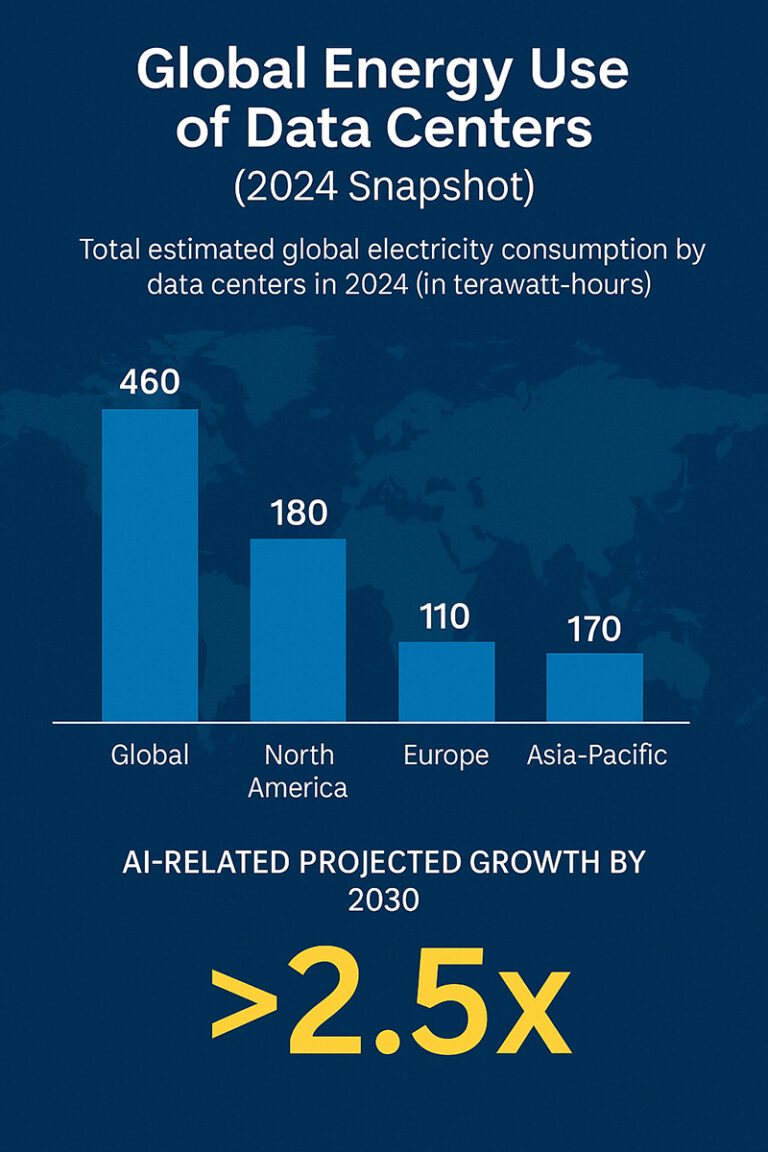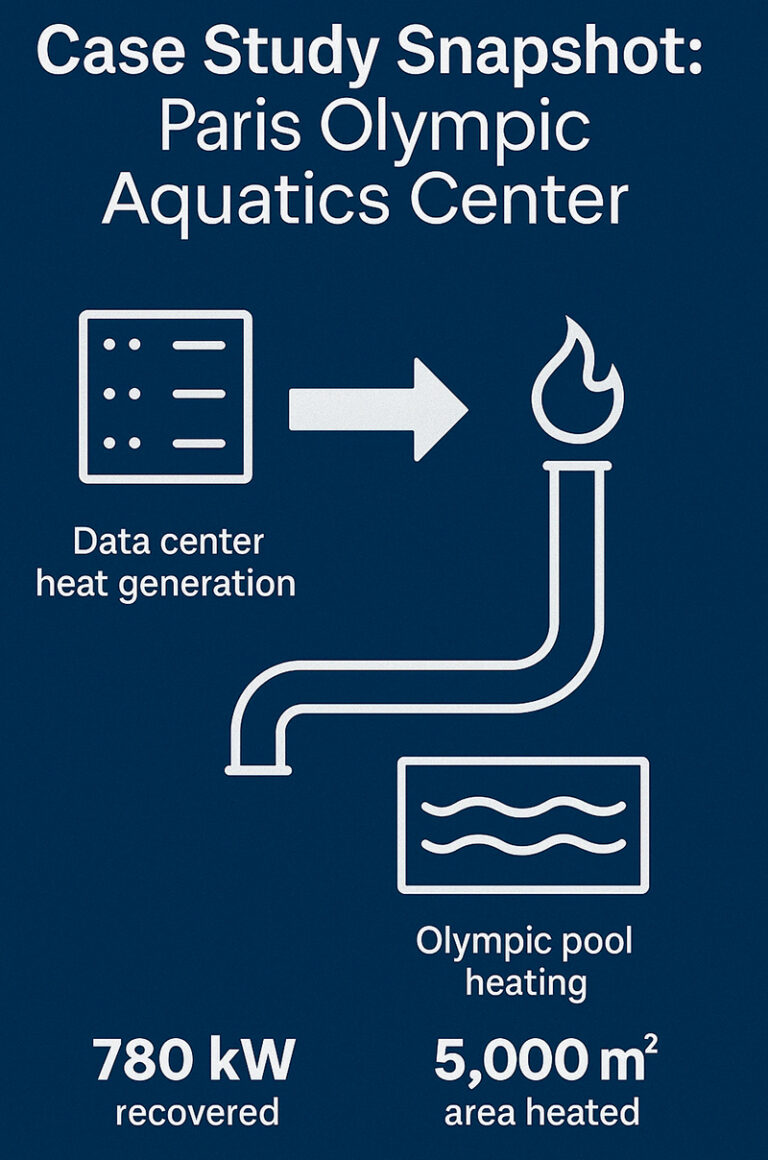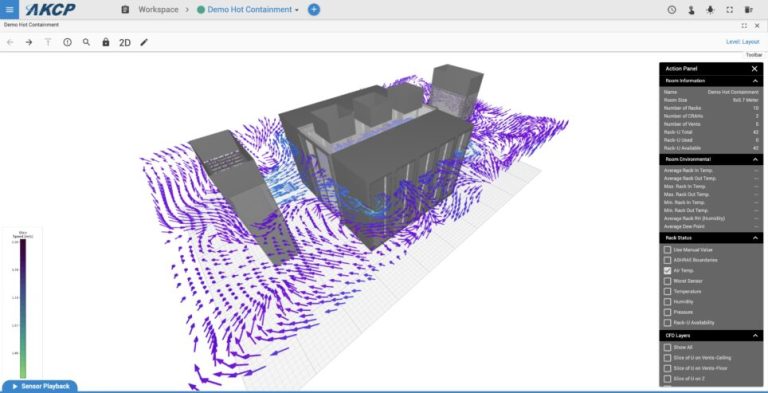Navigating Net Zero: Data Center Sustainability Strategies & Trends
The Gap Between Ambition and Reality
Data centers are massive consumers of energy, accounting for approximately 1-2% of global electricity demand. An obstacle to reaching net zero in the data center industry is the discrepancy between targets and the lack of concrete plans as to how they will be realized.
Sustainability declarations, such as utilizing 100% renewable energy or reducing water consumption by 50% sound great to the public. While these claims show a positive image, they lack measurable objectives. Without a strategy and quantifiable targets, achieving these goals remains elusive.

Recent Developments in Data Center Sustainability
The data center industry is undergoing significant transformations to enhance sustainability and reduce environmental impact. Notable trends and initiatives include:
Surge in Renewable Energy Adoption: Major data center operators are increasingly investing in renewable energy sources to power their facilities. By the end of the third quarter of 2024, the U.S. data center sector had contracted at least 50 gigawatts (GW) of clean energy, with solar energy accounting for 29 GW and wind energy for 13 GW. This shift underscores the industry’s commitment to reducing carbon footprints and promoting sustainable operations.
Innovative Waste Heat Utilization: Data centers are exploring methods to repurpose waste heat for community benefits. For example, a data center in northeast Paris is channeling excess heat to warm the Olympic Aquatics Center, demonstrating a practical approach to energy recycling and reducing overall environmental impact.
Escalating Energy Consumption Due to AI: The proliferation of artificial intelligence (AI) technologies is driving up energy demands in data centers. The International Energy Agency projects that electricity demand from data centers worldwide will more than double by 2030, with AI being a significant contributor. This trend highlights the need for energy-efficient AI solutions and sustainable infrastructure planning.
Advancements in Energy Efficiency Metrics: Companies like Google are making strides in improving energy efficiency within their data centers. Google reported a trailing twelve-month energy-weighted average Power Usage Effectiveness (PUE) of 1.19, reflecting ongoing efforts in facility tuning and best practice applications to optimize energy use.
Projected Growth in Sustainable Data Center Market: The market for sustainable data centers is anticipated to surpass $85 billion by 2029, driven by investments from large colocation and hyperscale data center operators. This growth indicates a robust industry focus on sustainability and energy efficiency.
These developments reflect the data center industry’s proactive approach to addressing environmental challenges and its commitment to achieving net-zero emissions through innovative and sustainable practices.

Monitoring for Accountability
The absence of monitoring further hinders progress towards net zero. Accurate tracking of energy consumption and carbon emissions is essential for assessing the true environmental impact of data centers. However, many data centers fail to accurately measure their energy usage, and the industry lacks a unified standard for measuring and reporting carbon emissions.
Lack of Transparency from Industry Leaders:
Google, Amazon, and Microsoft, the three largest cloud computing providers, have been criticized for their lack of transparency regarding their data center energy use. These companies have made public commitments to sustainability, although they have been reluctant to provide detailed information about their energy consumption and carbon footprint.
In a 2022 report, Greenpeace found that Google, Amazon, and Microsoft were all failing to provide adequate information about their data center energy use. The report states that they are not providing clear and consistent data on their energy consumption. This lack of transparency makes it difficult to assess their progress towards net zero and to hold them accountable for their environmental impact.
Regulatory Initiatives: A Step Towards Accountability
Governments worldwide are recognizing the urgency of addressing data center emissions. In the United States, the Environmental Protection Agency (EPA) is developing new regulations for data centers. Similarly, the European Union has issued an energy efficiency directive for data centers. Any data center larger than 500kW will have an obligation to report their energy efficiency figures.
Specific examples of legislation include:
- Germany: The German government has set a goal of reducing data center PUE to 1.3 by 2030.
- Singapore: The Singapore government has introduced a Green Mark scheme for data centers, which provides incentives for energy-efficient operations.
- Ireland: The Irish government has introduced a Data Center Energy Efficiency Code of Practice, which provides guidance on best practices for energy efficiency.
A Collective Effort for Sustainable Data Centers
Achieving net zero in the data center industry requires a concerted effort. Data centers must embrace sustainable technologies, invest in renewable energy sources, and prioritize energy efficiency measures. Governments can play a crucial role by providing incentives for sustainable practices, and supporting research and development in this domain. Consumers, too, can contribute by choosing data center providers committed to environmental responsibility.
Monitoring Solutions to Help Achieve Sustainability Goals
A comprehensive monitoring solution is the first step to help data centers achieve net zero. You must have an understanding of energy consumption, and an insight into operational efficiency before you can improve it. The continuous collection and analyzing of data allows organizations to pinpoint areas for improvement, and quantify the effects of energy saving initiatives.
An energy monitoring solution that goes down to server rack or individual server level, allows data center operators to identify energy intensive components of their operation, and patterns of use that result in wasted energy. An easy to implement solution to power monitoring, that can be installed in an operating data center, requiring no downtime would be sensors such as the Contactless Current Meter. This device allows monitoring of current for individual devices without the need for shutting down or an electrician due to its non-invasive design.
AKCPro Server DCIM software includes power train mapping to give an overview of your data centers power use, efficiency, capacity use and redundancy. Live PUE calculations show how changes you make to your data center affect your PUE in realtime.
Analysis tools like sensorCFD™ produce a CFD analysis of data center performance. Identifying hot-spots and cold-spots. Balancing cooling with server demands eliminates cold-spots and reduces energy use.

Conclusion: A Sustainable Future Demands Action
The data center industry faces significant challenges in achieving net zero targets. However, opportunities for improvement are available. By embracing energy efficiency, and adopting sustainable technologies, data centers can play a pivotal role in transitioning to a low-carbon economy. Governments, industry leaders, and consumers must work together to foster a culture of sustainability within the data center sector, ensuring a thriving digital landscape that is environmentally responsible.
The time for action is now. Data centers must move beyond ambitious targets and show results.

